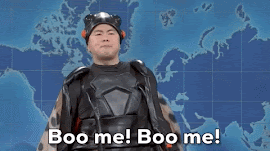It’s summer in America, which means that many ornamentals are in full, vibrant bloom. Ornamentals cover a wide range of plants. The only qualification for being an ornamental is that the plant is not grown for consumption. This means that everything from petunias to non-fruit trees are considered ornamental plants. When you have such a wide range of plants, it’s difficult to give general gardening advice about ornamentals. A cactus requires vastly different care than a begonia. Regardless of what type of ornamental you’re growing, all plants deal with pests and disease at some point. Keeping on top of pest issues, maintaining a healthy growing environment, and developing repeatable regimens go a long way towards keeping your garden colorful this summer.
The foundation of pest and disease control is that you need to stop it before it happens. Benjamin Franklin said it best, “An ounce of prevention is worth a pound of cure.” However, it’s currently the middle of summer and past the time when you’re putting plants in the ground for an outdoor garden. While some species of plants naturally repel harmful insects and others are naturally hardy and disease resistant, there are steps you can take to make sure your fragile ornamental plants still flourish.
General Tips for Pest ControlPests don’t just mean bugs. Rabbits, deer, and a variety of other mammals can mutilate a well-kept garden in a manner of minutes. Additionally, not all bugs are bad. Bees and butterflies are pollinators and are obvious examples of helpful insects, but other species of insects keep your garden safe by hunting harmful insects.
Green lacewings are a great example of a beneficial insect that choosing to hunt and prey on aphids.
ARBICO’s Solution for General Insect Pests
If you’re seeing harmful insects in your garden, try
BotaniGard® MAXX. This organic insecticide can be sprayed onto plants and pests when a pest population first becomes noticeable. It’s designed to be an all-purpose tool for pest management, taking care of weevils, whiteflies, aphids, and more.
ARBICO’s Solution for Mammal Control
A variety of simple, organic sprays are available that repel animals through smell and/or taste aversion. Check out the
Bobbex-R™ Animal Repellent and the
BONIDE® Hot Pepper Wax Animal Repellent RTU! Both sprays can be applied to plants without fear of chemical burns. As a bonus, you can apply the sprays to fencing around your garden to further ward off curious critters.
 |
| Marigolds are pollinator friendly ornamental plants that are naturally resistant to deer and rabbits. |
Tips for Next Year
Try planting some pest-repellent plants in your garden. Zinnias and marigolds are beautiful ornamentals that are hated by deer and rabbits.
Keep your Ornamentals Healthy with Basic Disease Management
A pest infestation can be curtailed if you catch it early enough, but once a plant disease spreads through your garden, it’s largely up to chance if your plants survive. Keeping a healthy garden requires foresight and a good eye for high-risk areas. Here are 5 simple steps for keeping your ornamentals healthy this summer.
1. Mulch your garden! The best time is in spring, but mulch can be spread anytime, and you’ll still get positive benefits. Mulch retains soil moisture and can help prevent overwatering.
2. Water in the morning, and never overwater. If you see stagnant pools of water in your garden, you could be in trouble.
3. When using fertilizers, minimize the amount of nitrogen you’re applying to the plant. While nitrogen does help your plants grow, it can also cause fungal and bacterial infestations if applied in abundance.
4. Give your plants some space! If your plants are crowded together, humidity will increase in that localized area, which increases the possibility of infection.
5. Keep up on your pest control! If aphids are eating your leaves, the holes left behind are especially vulnerable to infection.
ARBICO’s Solution
Arber® Bio Protectant contains giant knotweed extract. When applied to your plants, it creates a barrier that inhibits fungal and bacterial growth.
Tips for Next Year
Make sure your garden is tilled and all previous weeds, discarded leaves, and plant debris are gone from the grow site. Diseases can remain dormant on dead plant life throughout the winter.
How to Eliminate Japanese Beetles From your OrnamentalsJapanese beetles aren’t only found in Japan. They’ve long since crossed the Pacific Ocean and have found America to their liking. They’re found across the USA and will settle anywhere with sufficient foliage, which may include your garden. These beetles aren’t picky. They’ll eat everything from leaves to stems to flowers, and they do travel in groups. If you find one beetle with the distinctive green and copper coloring, you will find many more. Two easy solutions exist to control a small beetle population: soap and water or manual removal. Spraying the beetles with soap and water will cause them to lose their grip and then fall to the soil. Japanese beetles do not bite or have any irritants, so putting on a pair of gardening gloves and picking them off your plants will get rid of a small population.
ARBICO’s Solution
Beneficial nematodes can eliminate Japanese beetle larva before they get the chance to mature. BotaniGard® MAXX, mentioned earlier in this article, also works to kill off adult Japanese beetles. Go to
ARBICO’s dedicated webpage for a list of all products that can keep a Japanese beetle population under control.
Manage Potential Mildew Buildup
You’ll notice mildew by the white, powdery coating it leaves on the stem and leaves of plants. Managing mildew follows the same general principles outlined in the previous section on basic disease management. Below is a quick list that you can reference. Remember, preventative measures are key. If mildew establishes itself on one of your plants, prune away the infected area immediately, then properly dispose of the infected stems and leaves to avoid re-contamination burn the infected stems and leaves.
1. Make sure that your plants have some level of sun exposure every day. Shadier, enclosed locations are an ideal breeding ground for mildew.
2. Water early, and water to the roots. Splashing water onto leaves increases the risk of mildew. Installing a
drip irrigation system can be a way to save water, save time, and prevent mildew from forming.
3. Keep plants separate. Too much crowding equals too much humidity, which can easily lead to mildew.
ARBICO’s Solution
SuffOil-X® can be applied over plants to control a variety of fungal diseases, such as Botrytis and mildew.













































